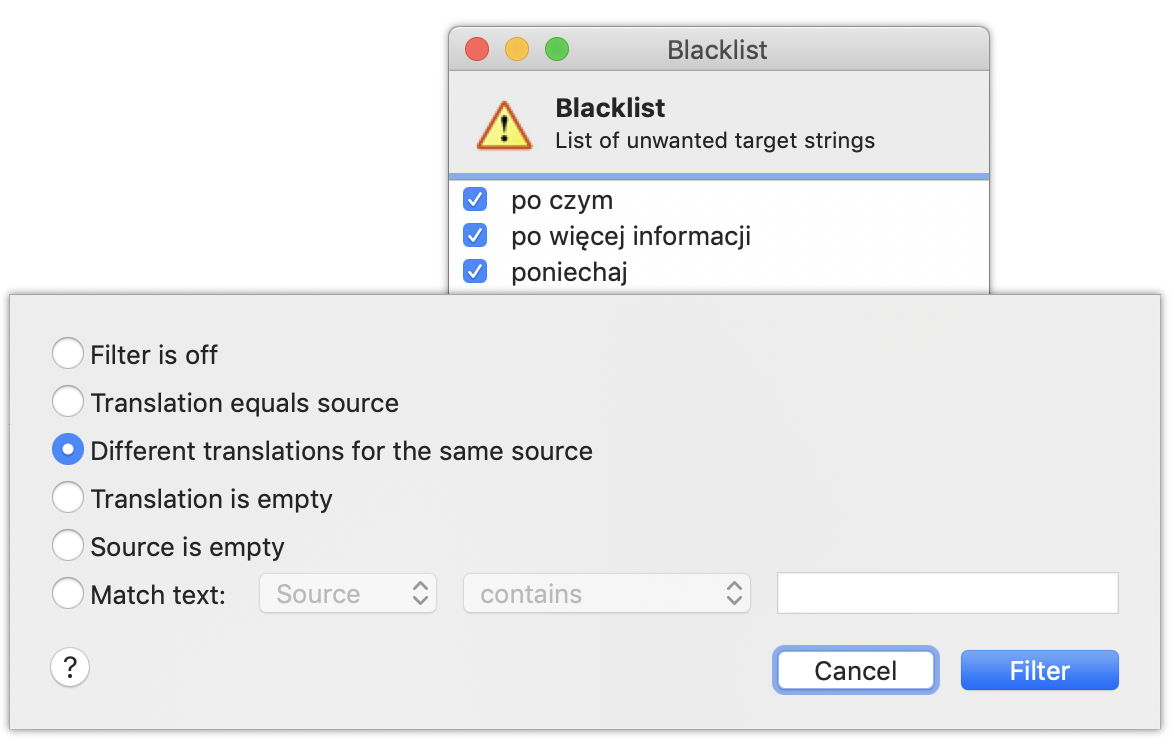

- Scan for osx mac os x#
- Scan for osx full#
- Scan for osx software#
- Scan for osx plus#
- Scan for osx windows#

Scan for osx windows#
os_fingerprint_msrprc.nasl Identifies the remote version and service pack of Windows by makingĬertain MSRPC requests against the remote Windows box.os_fingerprint_mdns.nasl If an mDNS server is present, will perform a highly accurate identification of Apple OS X systems.os_fingerprint_http.nasl Uses the remote web server signature to infer the version of Windows or the Linux distribution running on the remote host.(note, this functionality was add in Feb 2009) os_fingerprint_html.nasl Uses the HTML content returned by certain HTTP requests to fingerprint the remote OS.(Note, this functionality was added in Feb 2009) os_fingerprint_ftp.nasl Uses the remote FTP banner to attempt to identify the underlying operating system.The new process now takes input from the following other NASL scripts, which each reports their own OS guessing:
Scan for osx mac os x#
Prior to the recent change, this NASL script performed TCP/IP fingerprinting of OS stacks and also targeted a few Windows and Mac OS X protocols to increase the accuracy of the reported OS. Plugin # 11936 (OS Identification) is still the main ID Nessus users should use to perform OS enumeration of their scanned systems.
Scan for osx plus#
This new process elegantly combines the best of each of these approaches, plus adds many new techniques which contribute to Nessus's guess of what a remote operating system really is. Running commands like "uname" on UNIX or looking up certain registry settings for Windows can yield highly accurate results. For example, Mac OS X systems can be accurately identified through their network time protocol (ntp) daemon without credentials.

This type of information is extremely accurate compared to TCP/IP fingerprinting techniques. This information was previously reported, but contained in the results of many separate plugins. While logged into a UNIX or Windows system, or performing certain types of application queries, it is trivial to accurately determine the remote operating system.
Scan for osx full#
Second, many Nessus users perform full credentialed scans and in-depth analysis of various applications. And even when TCP/IP stack fingerprinting works 100%, it often can only guess the remote kernel, but not the specific Linux, Windows or other types of distributions. Many variables on the network and on the host can influence how a stack behaves and cause unmatched or inaccurate guesses as to what exactly the remote OS actually is. These different reactions are used to identify if the host is Windows, Linux, Cisco IOS and so on. TCP/IP fingerprinting techniques send specially crafted packets which trigger a different reaction from one OS to another. įirst, although we feel that TCP/IP fingerprinting to guess a remote network stack is useful, there are too many variables and limitations involved to be considered 100% reliable. This blog entry describes this new process and shows some example results. This new method combines input from various other plugins that perform separate techniques to guess or identify a remote operating system. Tenable's Research group recently introduced a highly accurate form of operating system identification. If you’re only ever scanning documents it’s serviceable, but anything else such as an odd sized photo or drawing, it’s a drag.(Note: This Blog was originally released in 2007 and was updated in March of 2009 to reflect an additional form of OS detection based on HTTP banners.)
Scan for osx software#
Even the 20-year-old Epson this printer replaced provided a preview/crop feature, as has every other scanning software I’ve ever used in the past 30 years. This means it will take extra time to scan and extra time to edit the result. If you’re scanning anything other than a standard-size page, you will need to scan at the largest page size (8.5x11) and then crop what you want using another application, such as Apple’s built-in Preview app. The most egregious of these misses is the inability to run a quick preview scan and then specify the scanning area with a bounding box before hitting the final Scan button. I’m using it on an iMac over a wifi connection and it does work, but the lack of anything but the most basic scanning features is pretty disappointing. This review is for the Brother iPrint&Scan 8.0 scanning utility which I’m using with a newly purchased Brother HL-L2395DW scanner/printer.


 0 kommentar(er)
0 kommentar(er)
